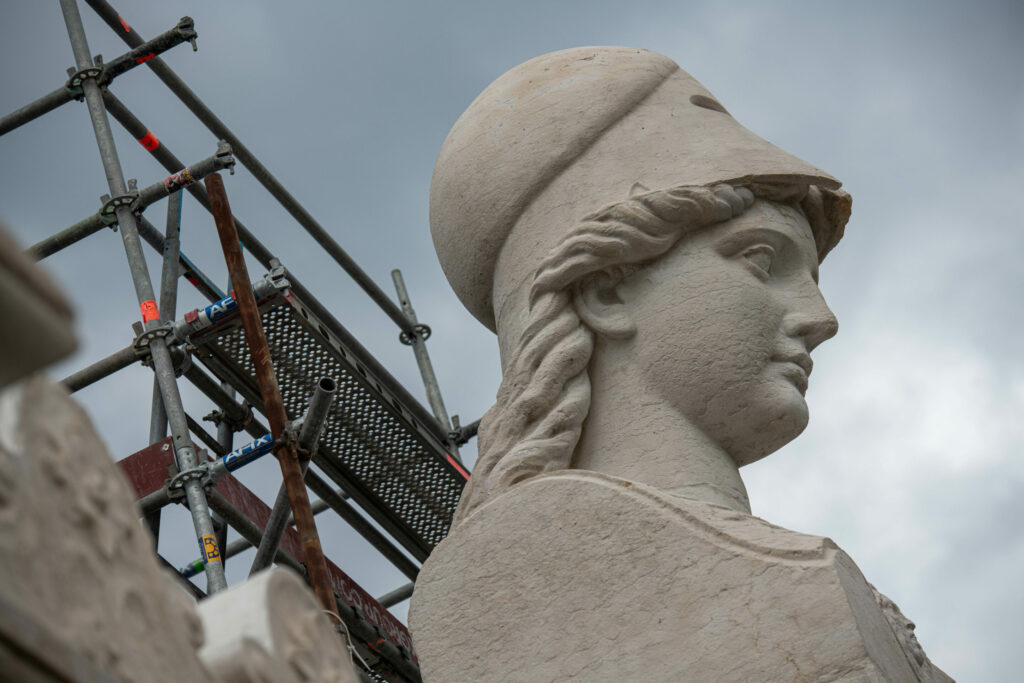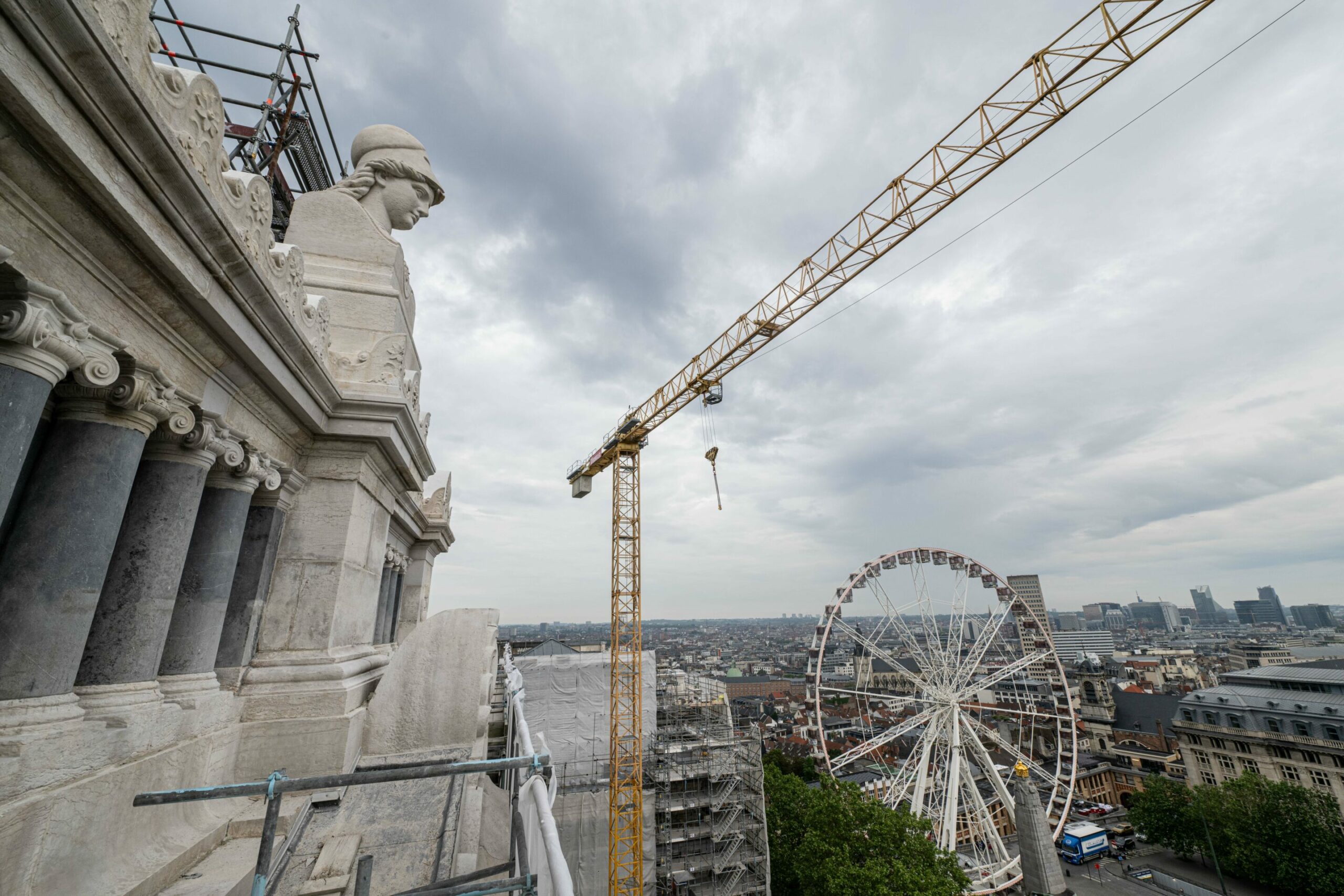After four decades of being covered by scaffolding, the Minerva statue on top of the Palais de Justice in Brussels was the first part of the building to be unveiled during its ongoing renovations on Friday morning, in the presence of State Secretary Mathieu Michel (MR).
The Buildings Agency started the restoration of the facade of the Palais de Justice on Place Poelaert in August 2023. It is the first phase of the restoration of all facades.
"I have made it a priority to remove the scaffolding from the Brussels Palais de Justice. It is unacceptable to have scaffolding on the largest courthouse in the world for 40 years," Michel said. "It is like denying the efficiency of the State."
The restoration of the façade on Place Poelaert will be completed by the end of 2025. For the entire building, the Buildings Agency is aiming to be ready by Belgium's 200th anniversary in 2030. "We will return one of its democratic symbols to Belgium fully restored. Belgians should once again be proud of the Palais de Justice and it should be the showpiece for Belgium in the world."

Statue of Minerva during the inauguration. Credit: Belga/Jonas Roosens
Now, the upper central part of the facade was fully restored and the scaffolding covering it was removed, displaying the restored three-metre-tall bust of Minerva – the goddess of wisdom and guardian of human civilisation, to who the Palais is dedicated – once again.
The restoration of the façade (22,750 m², equivalent to almost five football pitches in size) of Belgium's largest historical building is a complex and very labour-intensive project: the stones and decorative elements are cleaned one by one, and carefully repaired or replaced where necessary. Only a very limited part of the stone is completely replaced. Around 70 to 80 people are working on the site every day.
To preserve the original appearance of the building, stones from the original quarries (mainly from the Comblanchien quarries in the French Burgundy region) were used for the restoration. The stone blocks are selected according to quality in the quarries and further processed mainly in stone-cutting plants in Belgium into the appropriate shapes.

A statue of Minerva and the view. Credit: Belga / Jonas Roosens
The work in the stone-cutting plant is partly manual, but where possible, digital drawings and robots are also used to mill the stones – allowing the restoration process to be faster and more accurate.
To avoid future water infiltrations, most of the grouting is also renewed and horizontal stone surfaces are being used as well. The outer joinery of the facade is being restored and repainted. Test restorations have already been carried out for this purpose.
Some of the windows will also be fitted with new glazing and depending on the rooms, this will be safety or anti-burglary glass (high-security rooms) or insulating glass (for the heated rooms) – which will also make the courthouse more energy efficient.
At the end of the first phase, the cour d'honneur (forecourt) will also be redesigned and fitted with fencing based on the historical model.
Next phases
In the next phase (2026-2027), the facades of the plinth under the dome will be restored, which is why the scaffolding around the plinth is now being adapted to current standards and a preparatory study is being carried out.
After the restoration of the facades of the plinth under the dome, the facades of the Palais de Justice on the side of Rue de Wynants and Rue aux Laines will be restored. In the final phase, those on the side of the Rue des Minimes, as well as the facades of the adjacent courtyards, will be restored.

